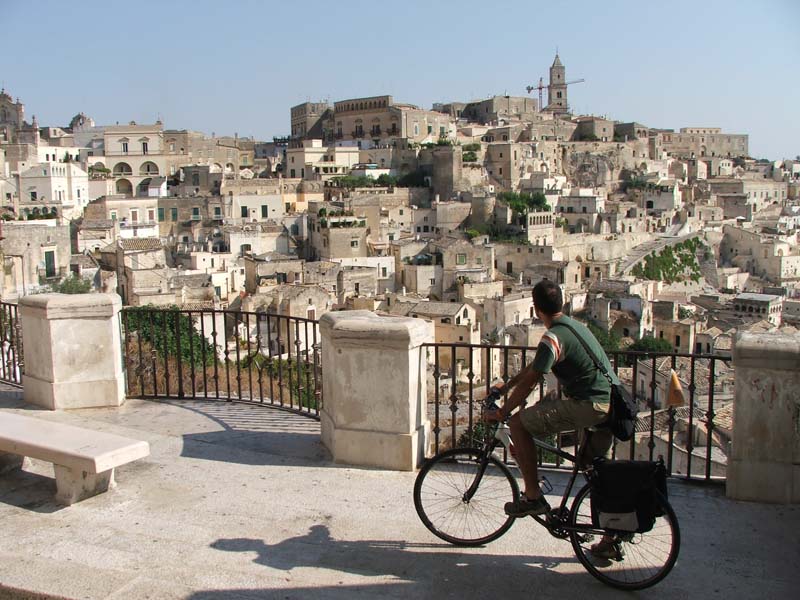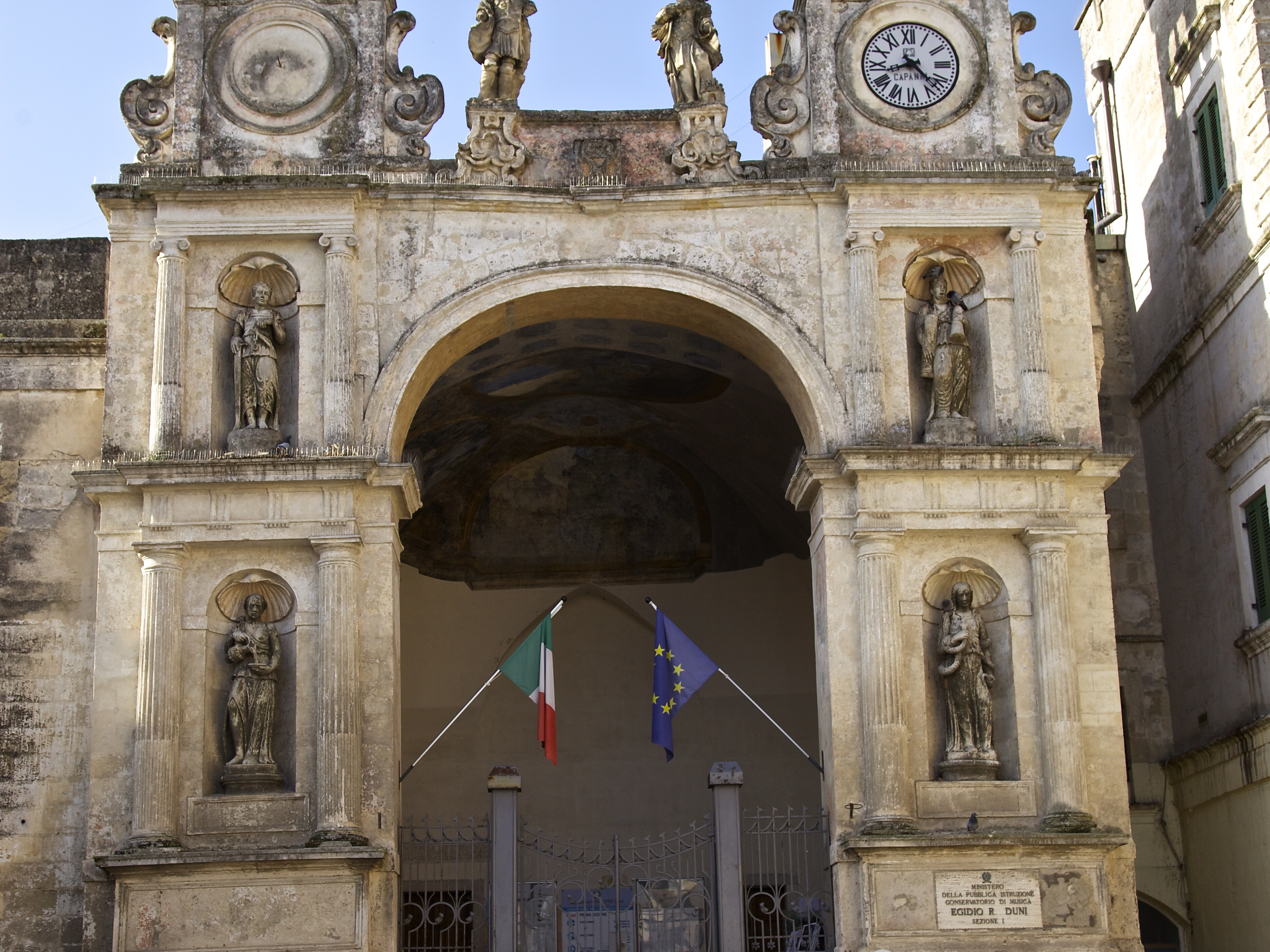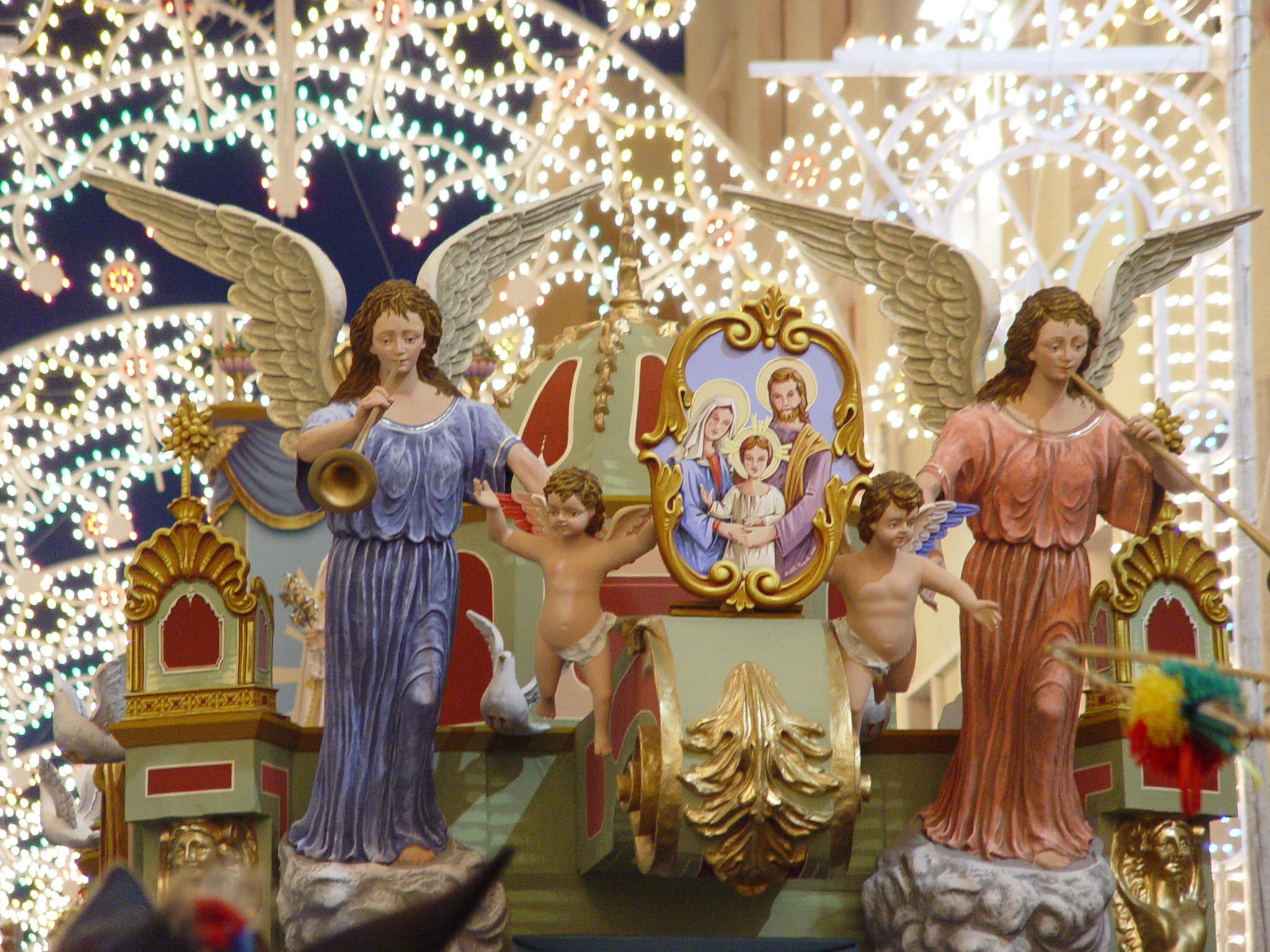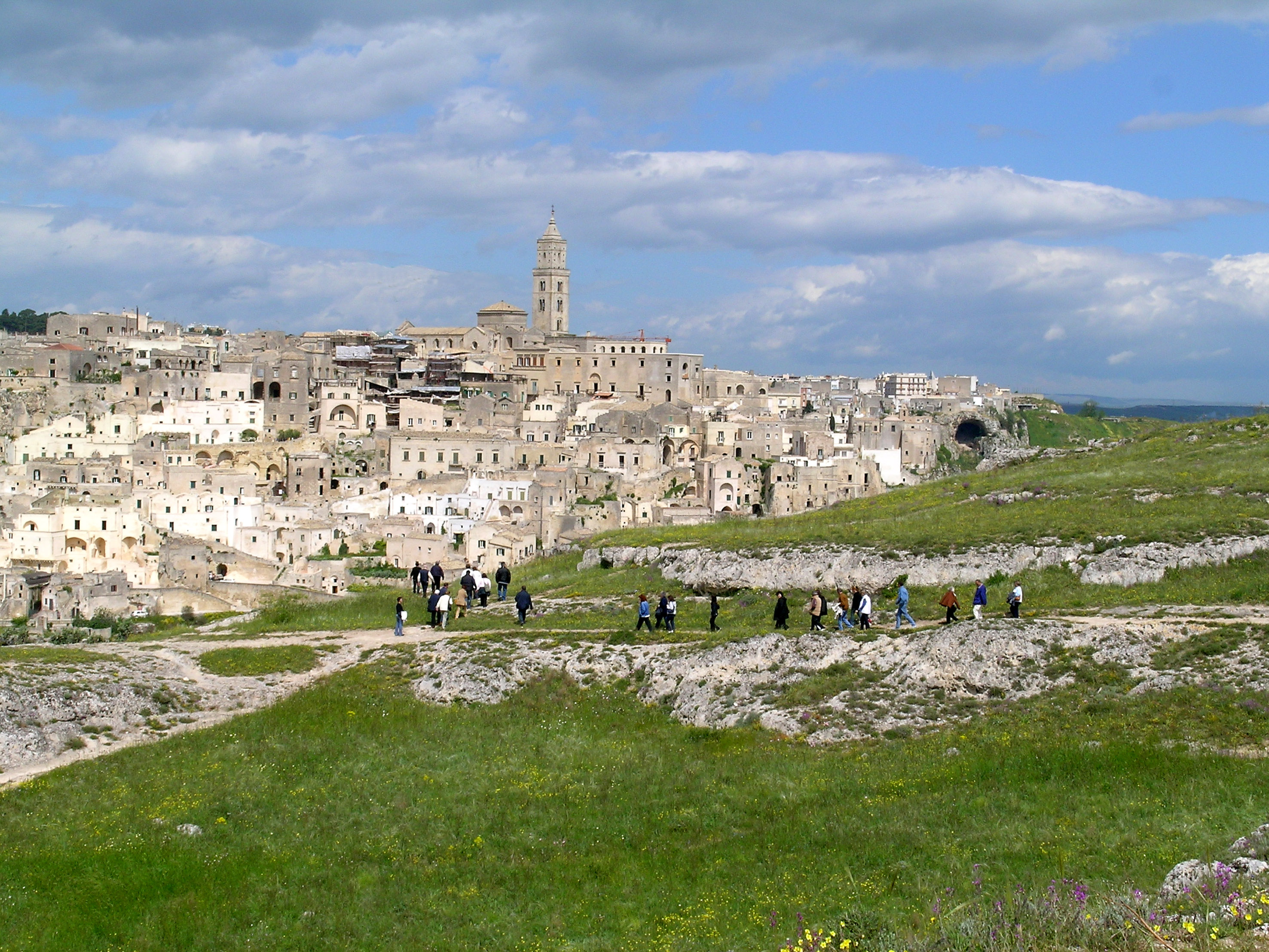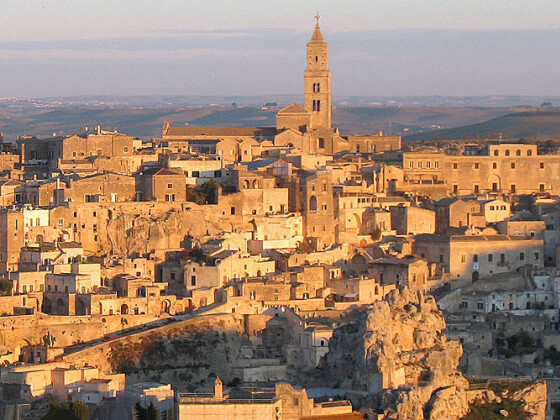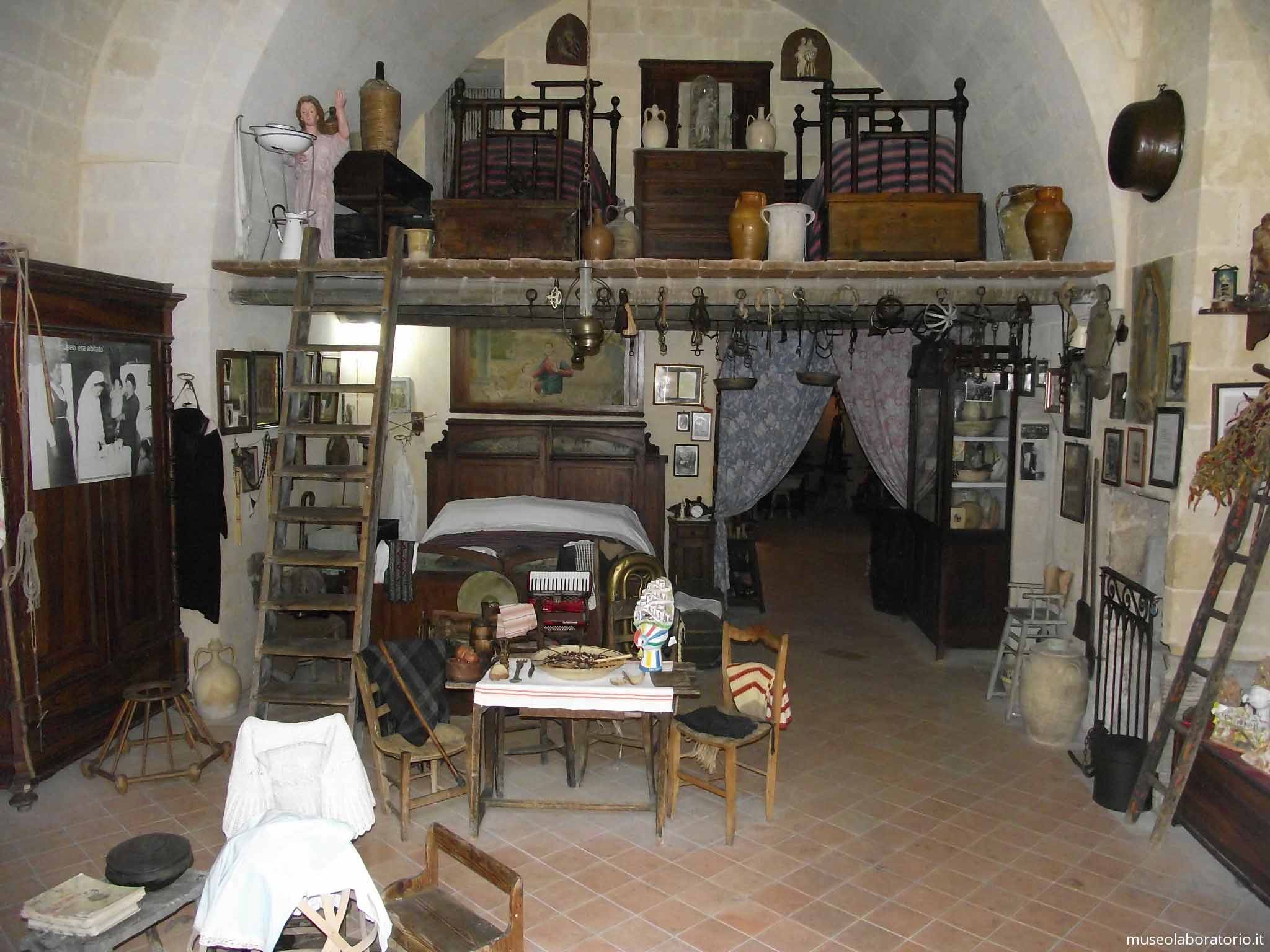Narrow lanes, alleys and stairways winding through the cave districts, arches and galleries, large terraces, bell towers and rock churches form the ancient inhabited centre of Matera, the 2019 European Capital of Culture, also known as ‘Città dei Sassi’ (City of Stone).
Two natural amphitheatres entirely carved out of the rock: the ‘Sasso Barisano’, to the north-west, and the ‘Sasso Caveoso’, to the south. The ‘Civita’ district, which is the oldest inhabited group of buildings, dominates on the ‘Sassi di Matera’, a designated UNESCO World Heritage Site since 1993.
A unique magic that, over time, has achieved the fame of an extraordinary natural film set, where, especially at sunset, you will feel part of a nativity scene, full of meaning.
Pure and authentic scenery with no signs of modernity, the Murgia Materana and the Sassi have seen traces of man since prehistoric times and bear witness to the history of humanity, having been continuously inhabited.
The history of Matera begins in distant times, ranging from prehistoric times to the various metal ages up to the advent of Christianity.
Matera is considered one of the oldest cities in the world as into the Gravine Materane several objects dating back to Paleolithic age have been found.
The discoveries by Domenico Ridola, a doctor with a passion for archeology, founder of the National Archaeological Museum of Matera, highly accredit the human presence since the Paleolithic. Evident traces of villages dating back to the Neolithic, on the Murgia Timone, Murgecchia, Serra d’Alto and on the Civita hill suggest in that period the settlements became more stable.
After going through the phases of prehistory, including the different metal ages, Christianity characterized the history of Matera. Small monastic communities emigrated following Iconoclasm from Cappadocia, Armenia, Asia Minor and Syria. They took refuge in the already existing caves, they built others and used them as homes and places of prayer. Thus the splendid Rock Churches were born, precious treasures of art and culture.
Two natural amphitheatres entirely carved out of the rock: the ‘Sasso Barisano’, to the north-west, and the ‘Sasso Caveoso’, to the south. The ‘Civita’ district, which is the oldest inhabited group of buildings, dominates on the ‘Sassi di Matera’, a designated UNESCO World Heritage Site since 1993.
Narrow lanes, alleys and stairways winding through the cave districts, arches and galleries, large terraces, bell towers and rock churches form the ancient inhabited centre of Matera, the 2019 European Capital of Culture, also known as ‘Città dei Sassi’ (City of Stone).
The Sassi originated from small inhabited settlements that developed around several places of worship, beyond the boundaries of the ancient defensive walls of the Civita, which is the oldest institutional, religious and commercial district. The Civita divides the two Sassi areas: the Sasso Caveoso, mostly made up of cave-houses, and the Sasso Barisano, which is largely formed by traditional houses, built using more complex building techniques.
During the day, the dazzle of the sun on the white rock will amaze you; at night, when the moonlight shines on the Sassi, you will experience the unique feeling of being within a huge crib, dotted with hundreds of small lights. The Sassi are provided with a water system that collects both rainwater and spring waters; in the past, it was made up of a network of channels and cisterns, able to bring water both to homes and surrounding areas.
Wander around this unique townscape, in the early afternoon, and hear the muffled echo of people’s voices, the ringing bells of the numerous churches that surround the Sassi, as if they were suspended in time. This is the feeling you will experience when looking at the timeless beauty of the Sassi and the Historical Natural Park of the Rupestrian Churches of Matera, which is found on the opposite side of the plateau. Matera offers some unique scenery, an emotional and cultural landscape with multiple levels built over time. Stunning cave-dwellings, dug out of the rock, are surrounded by more than 150 rock churches; alleys and narrow streets wind their way through elegant buildings and houses, making the city a unique destination of tourists from every part of the world.
Today, the city of the Sassi is the ideal location to rediscover the most authentic aspects of knowledge and fully enjoy a unique human and cultural panorama, where everyone can find something of themselves and feel immediately warmly welcomed. One of the most amazing experiences is wandering around the Sassi districts, where cave-houses are built on top of one other, and narrow streets lead to alleys, courtyards, stairways and squares. Or you can discover the astonishing Park of the Rock Churches, across the Gravina river, boasting over 150 places of worship carved out of the rock. You will feel as if you were part of a “stone fresco” guarded by deep silence. Because Matera is one of those cities that “the spirit never leaves” (Tahar Ben Jelloun).
Along the streets of Matera there are many museums as the Archeological Museum Ridola, National Museum of Medioeval and Modern Art, the MUSMA and interesting cultural centers: Casa di Ortega, Casa Noha and Casa Cava, where take place cultural events.
The ancient palaces tell of the history, the style, and the role of the most famous families of the City of the Sassi.
In Matera, among the many architectures that reveal its past, persisting in the present, the historic palaces certainly stand out.
Among the most important in Matera are the 17th-century Palazzo Lanfranchi, home to the National Museum of Medieval and Modern Art of Basilicata, close to the Piazzetta Pascoli square, in addition to the Palazzo del Sedile, which overlooks the square of the same name and which houses the city’s Conservatory dedicated to the musician Egidio Romualdo Duni.
The “Tommaso Stigliani” Provincial Library is also located in the Palazzo dell’Annunziata, in the central Piazza Vittorio Veneto square.







